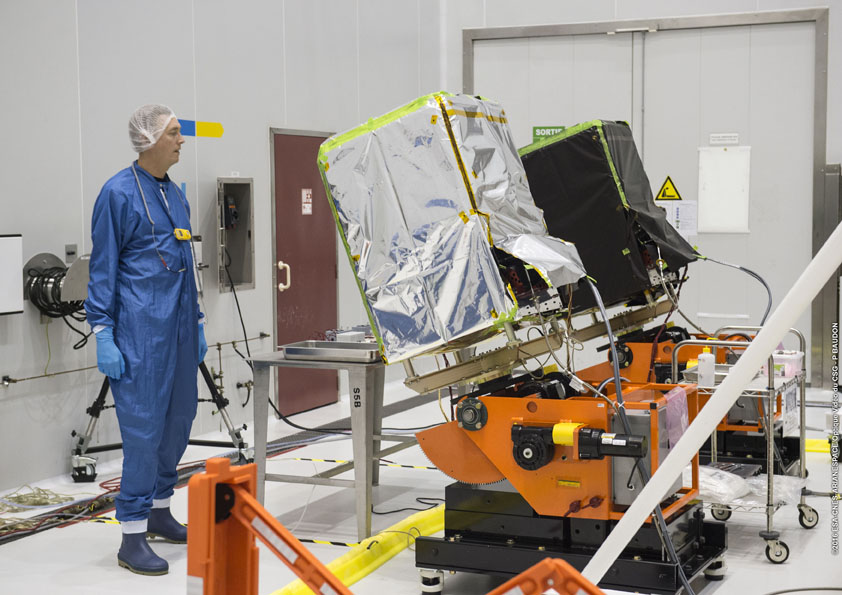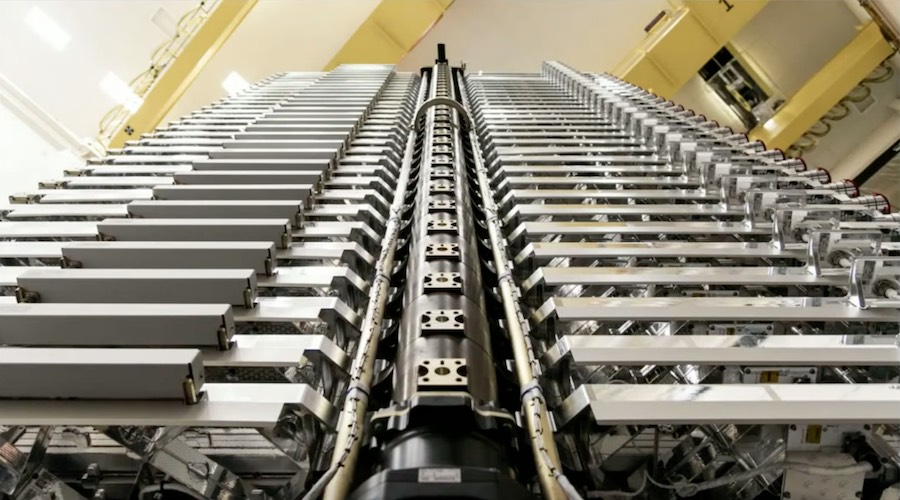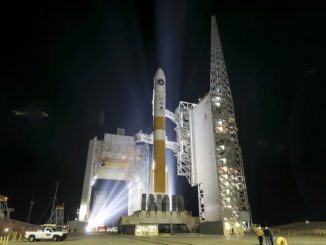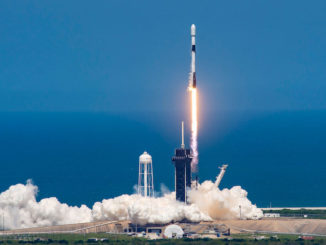
Three of Planet’s commercial SkySat Earth-imaging spacecraft will ride to space on top of a stack of SpaceX Starlink satellites next month aboard a Falcon 9 rocket, and three more will hitch a ride on another SpaceX mission later this summer.
Planet announced the rideshare launch agreement with SpaceX on Wednesday, confirming plans to launch six satellites on two previously-scheduled Falcon 9 missions carrying more of SpaceX’s Starlink broadband satellites into orbit.
The first three SkySat satellites will fly into orbit on SpaceX’s dedicated ninth Starlink mission planned for launch from Cape Canaveral some time in June, Planet said. Three more SkySat spacecraft will launch on a Starlink mission later this summer.
Mike Safyan, vice president of launch for San Francisco-based Planet, said the SkySat satellites will be mounted at the very top of the stack of Starlink payloads inside the fairing on each Falcon 9 flight. The SkySats will attach to the Starlink stack using a custom adapter.
Built by Maxar, each of the SkySat satellites weighs around 242 pounds (110 kilograms) at launch. The SkySats are about the side of a mini-refrigerator, and their optical instruments produce images of Earth with a resolution of less than 2.4 feet, or about 72 centimeters, according to Planet.

With somewhere between 100 and 150 Earth-imaging spacecraft in its fleet, Planet operates the world’s second-largest constellation of commercial satellites after SpaceX’s Starlink Internet network. Planet’s fleet includes Dove CubeSats designed for quick-response imaging, and 15 SkySats to capture sharper views of Earth.
The first 15 SkySat satellites launched into polar sun-synchronous orbits and fly in in north-south paths around Earth. Sun-synchronous orbits are popular for remote sensing and environmental satellites because they allow regular imaging of the Earth’s surface with the sun at the same angle.
“About half of the SkySats currently pass overhead in a morning crossing plane, while the other half moves in an afternoon crossing plane, so together they provide twice-daily coverage of select areas on a global scale,” Safyan wrote on Planet’s website. “SkySats 16-21 will operate at a ‘mid-inclination’ orbit of 53 degrees, complementing the sun-synchronous fleet, and will offer more targeted coverage and raw image capacity in key geographic regions.”
Starlink satellites fly in the same type of orbit at an inclination of 53 degrees. Safyan told Spaceflight Now the SkySats will use their own propulsion to maneuver from the Starlink injection orbit to an operating altitude of around 250 miles (400 kilometers).
The first 15 SkySats have launched on a range of rockets, riding a Ukrainian-Russian Dnepr booster in 2013, a Russian Soyuz launcher in 2014, an Indian PSLV and a European Vega rocket in 2016, Northrop Grumman’s Minotaur-C rocket in 2017, and a Falcon 9 mission in 2018.
SpaceX is selling capacity on Starlink launches to other companies who want to book rides for small satellites, offering an online booking system for prospective customers. SpaceX says launch prices for a rideshare payload of up to 440 pounds, or 200 kilograms, start at $1 million.
In addition to selling excess room on Starlink missions, SpaceX is planning as many as three dedicated Falcon 9 rideshare launches per year to sun-synchronous orbit. The first of the company’s dedicated rideshare missions is scheduled for December from Vandenberg Air Force Base in California.

The rideshare launches are similar to a sun-synchronous orbit multi-satellite launch from Vandenberg on a Falcon 9 rocket in December 2018. But that mission was managed by Spaceflight, a rideshare launch broker based in Seattle, which purchased the entire capacity of a Falcon 9 rocket and sold slots to commercial and government customers.
Now SpaceX itself is putting together rideshare launches, selling slots directly to satellite operators and brokers that then distribute mass and volume allotments to their customers.
The majority of SpaceX’s launches this year will add satellites to the Starlink fleet, which is designed to beam broadband Internet service to consumers around the world. The first phase of the Starlink network will include 1,584 satellites in low Earth orbit, but SpaceX eventually plans to launch thousands more on dozens of Falcon 9 missions.
The flat-panel Starlink satellites launch in a stack inside the Falcon 9 rocket’s payload fairing. Each Starlink craft weighs more than a quarter ton, and a load of 60 of the satellites weighs more than 34,000 pounds (15.6 metric tons).
Gwynne Shotwell, SpaceX’s president and chief operating officer, said in December that she hopes to book rideshare payloads on all of the company’s Starlink launches. If necessary, SpaceX could reduce the number of Starlink satellites on a particular launch to accommodate a secondary payload.
“You can take a satellite off, or if it’s super tiny, you can just put it on the top,” Shotwell said.
Email the author.
Follow Stephen Clark on Twitter: @StephenClark1.



